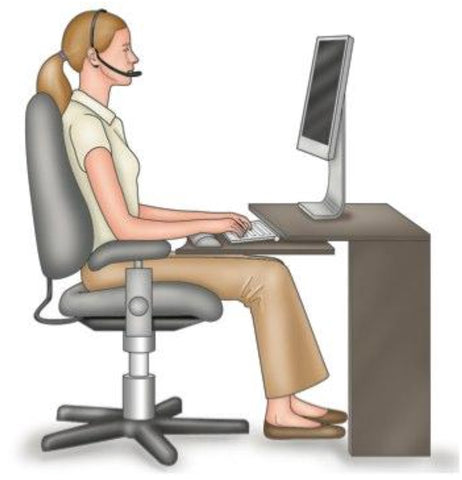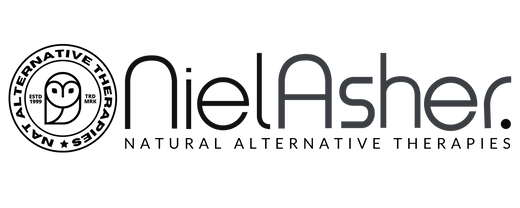Trigger Point Formation and Posture
Alexander Technique and Trigger Points
Introduction
We all know that posture is important. Whether we're sitting at a desk, standing in line, or working out at the gym, the way we hold ourselves impacts our comfort, our energy levels, and even our long-term health. Yet, posture isn't just about standing up straight—it’s a complex interplay of muscles, fascia, and neurological patterns that shape how we move and function. And at the heart of many postural imbalances? Trigger points.
As an experienced manual therapist, I've worked with countless clients struggling with poor posture, chronic pain, and muscle dysfunction. Time and time again, I’ve found that trigger points in key postural muscles are a major culprit. These tight, hyperirritable spots in the muscle tissue don’t just cause local pain; they create referred pain patterns, restrict movement, and contribute to faulty posture that can be incredibly difficult to correct without proper intervention.
So, let’s dive deep into the relationship between trigger points and posture, exploring how they affect the body, what common postural imbalances they contribute to, and what we can do to fix them.

Ideal sitting posture for those who work with computers - failure to take posture seriously can lead to long term injuries.
The Role of Trigger Points in Posture
Trigger points—also known as "knots"—are small, hypercontracted areas within a muscle. They often develop due to overuse, poor movement patterns, injury, or prolonged static positions. These points of tension create dysfunction in the muscle by restricting blood flow, reducing flexibility, and altering how the muscle functions within movement patterns. When trigger points develop in postural muscles, they can have profound effects on alignment, leading to chronic pain and movement dysfunction.
Postural muscles are designed for endurance; they keep us upright and stabilize us throughout the day. When they become dysfunctional due to trigger points, the effects can ripple through the entire body. For example, a trigger point in the upper trapezius might not just cause a sore shoulder—it could lead to neck pain, headaches, and even a forward head posture that affects breathing and spinal health. Likewise, tight hip flexors laden with trigger points can lead to lower back pain, an anterior pelvic tilt, and compensatory muscle imbalances that throw off the entire kinetic chain.
Common Postural Imbalances Linked to Trigger Points
Two of the most prevalent postural imbalances we see in today’s modern world are Upper Crossed Syndrome (UCS) and Lower Crossed Syndrome (LCS). These patterns, first described by Dr. Vladimir Janda, explain how muscle imbalances develop due to prolonged poor posture, especially in our increasingly sedentary lifestyles.
Upper Crossed Syndrome (UCS)
Upper Crossed Syndrome is characterized by a forward head posture, rounded shoulders, and an exaggerated curve in the upper back. It’s commonly seen in people who spend a lot of time at a desk, looking at screens, or driving for long hours. This pattern creates a muscle imbalance between overactive and weak muscles, with trigger points playing a major role in keeping this dysfunction in place.
-
Tight, overactive muscles with trigger points: Upper trapezius, levator scapulae, sternocleidomastoid (SCM), pectoralis major and minor
-
Weak, inhibited muscles: Deep neck flexors, lower trapezius, serratus anterior
Trigger points in the upper trapezius and levator scapulae contribute to stiffness, pain, and limited range of motion in the neck and shoulders. Many people with UCS suffer from chronic headaches, as trigger points in the SCM and suboccipital muscles refer pain to the temples and base of the skull.

Upper Crossed Pattern
Lower Crossed Syndrome (LCS)
Lower Crossed Syndrome affects the pelvis and lumbar spine, creating an anterior pelvic tilt, excessive lumbar lordosis, and tightness in the lower back and hip flexors. This imbalance is common in people who sit for prolonged periods, such as office workers, truck drivers, and even athletes who don’t balance their training properly.
-
Tight, overactive muscles with trigger points: Hip flexors (psoas, rectus femoris), lumbar erectors
-
Weak, inhibited muscles: Gluteus maximus, abdominal muscles
Trigger points in the hip flexors and lower back muscles pull the pelvis into an excessive forward tilt, creating strain on the lumbar spine and making the core muscles ineffective. This often leads to chronic low back pain, tight hamstrings, and poor movement mechanics during exercise.

Posture and the Alexander Technique
One approach to improving posture that integrates beautifully with trigger point therapy is the Alexander Technique. This method focuses on re-educating the body’s movement patterns to create more efficient, natural posture. Instead of simply "forcing" yourself to stand up straight, the Alexander Technique teaches you how to move with greater awareness, ease, and coordination.
Many people dealing with chronic trigger points and postural imbalances benefit from learning how to move without unnecessary muscular tension. The Alexander Technique helps retrain the nervous system, allowing tight muscles to release and underactive muscles to engage properly. It’s a fantastic complement to manual therapy, particularly for those with stubborn postural habits.

Lower Crossed Pattern
Improving Posture: The Role of Manual Therapy and Movement
Addressing trigger points in postural muscles requires a multi-faceted approach. Manual therapy—whether through massage, dry needling, or myofascial release—helps release stubborn knots, but long-term improvement depends on corrective exercises, movement education, and lifestyle changes.
Some key strategies include:
-
Releasing trigger points manually: A skilled therapist can use ischemic compression, stretching, or cupping to deactivate trigger points.
-
Strengthening weak postural muscles: This might include deep neck flexor exercises for UCS or glute activation drills for LCS.
-
Improving movement habits: Awareness-based methods like the Alexander Technique or Pilates help retrain posture for daily activities.
-
Stretching tight, overactive muscles: Lengthening techniques for the pecs, hip flexors, and lumbar spine can help balance posture.
-
Ergonomic adjustments: Making small changes to desk setup, chair positioning, and daily movement routines can prevent trigger points from recurring.
Conclusion
Posture isn’t just about standing up straight; it’s a dynamic relationship between muscles, joints, and the nervous system. When trigger points form in key postural muscles, they create imbalances that lead to chronic pain, stiffness, and movement dysfunction. Understanding how trigger points contribute to conditions like Upper Crossed Syndrome and Lower Crossed Syndrome can help us develop targeted interventions that restore balance and comfort.
By incorporating manual therapy, movement re-education, and proper muscle conditioning, we can break the cycle of pain and poor posture, leading to a healthier, more aligned body.
References
-
Janda, V. (1988). "Muscle Weakness and Imbalance." Physical Therapy 68(7), 966-975.
-
Simons, D. G., Travell, J. G., & Simons, L. S. (1999). Myofascial Pain and Dysfunction: The Trigger Point Manual. Lippincott Williams & Wilkins.
-
Gelb, M. (1994). Body Learning: An Introduction to the Alexander Technique. Henry Holt and Company.
Disclaimer
This article is for educational purposes only and should not be considered medical advice. If you are experiencing persistent pain or postural issues, consult with a qualified healthcare professional before attempting any self-treatment.

Ready to take your practice to the next level?
Explore which continuing education course is right for you.














